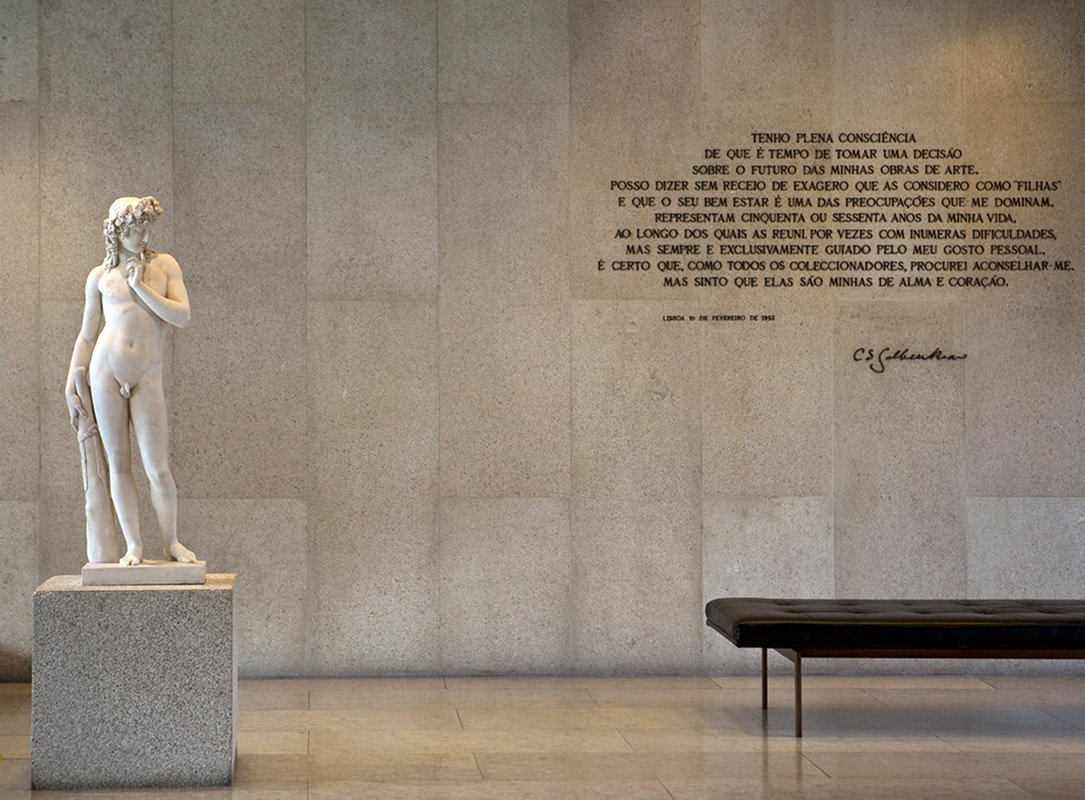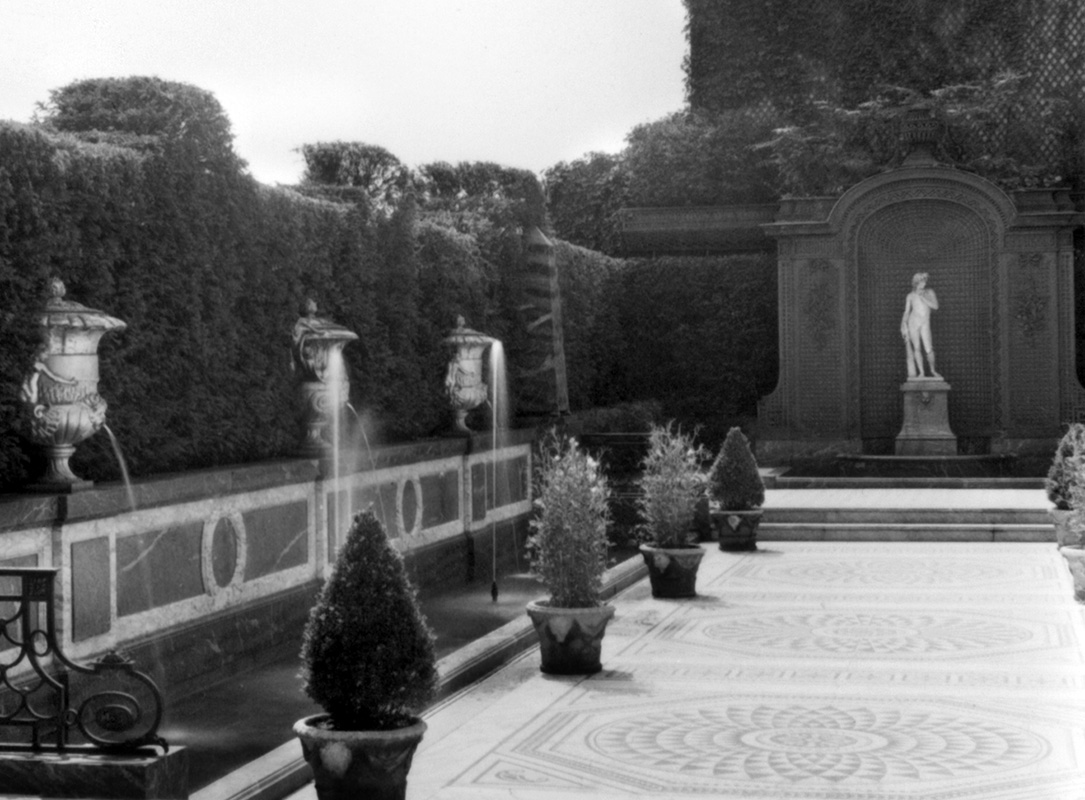Cupid Triumphant

After almost forty years out of the public eye, the sculpture Cupid Triumphant, by German artist Konrad Heinrich Schweickle (1779–1833), is now on display in the atrium of the Calouste Gulbenkian Museum.
Dating from the beginning of the 19th century, this neoclassically inspired work has not been shown since 1976, the year it featured in the famous Evocative Exhibition commemorating the Calouste Gulbenkian Foundation’s twentieth birthday. At the time, the work was identified as a representation of Bacchus. However, the new reading of an element found in the sculpture, the lightning bolt at the feet of the God, a symbol of Cupid’s triumph over Jupiter, allowed for its reidentification.
Before it was installed in the atrium of the Museum, the work, displayed for several years on the terrace of Calouste Gulbenkian’s house in Paris, was the object of a restoration project that returned it to its original appearance.
The sculpture which usually occupies this space, Jean-Antoine Houdon’s Apollo, is currently part of the temporary exhibition Pose and Variations. Sculpture in Paris in the age of Rodin.



